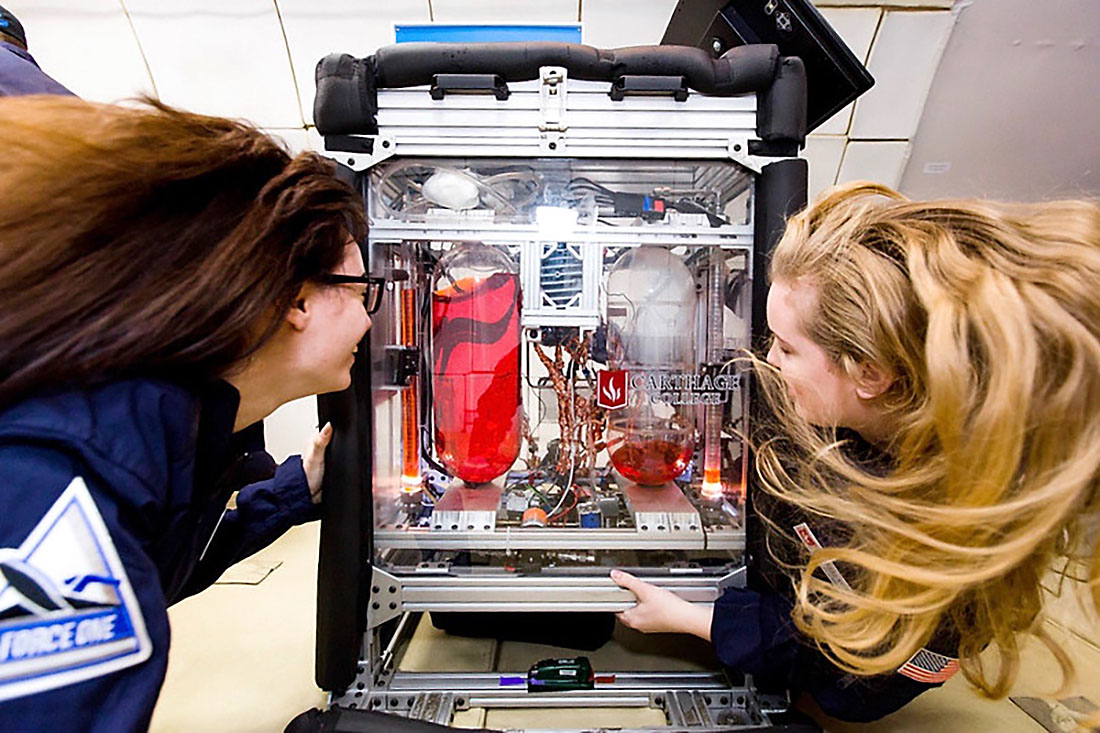Carthage students Taylor Peterson (left) and Celestine Ananda are shown here observing the gauging of unsettled liquids during a period of microgravity on a flight with ZERO-G in November 2018. (Carthage College)
Home Carthage students Taylor Peterson (left) and Celestine Ananda are shown here observing the gauging of unsettled liquids during a period of microgravity on a flight with ZERO-G in November 2018. (Carthage College) Carthage students Taylor Peterson (left) and Celestine Ananda are shown here observing the gauging of unsettled liquids during a period of microgravity on a flight with ZERO-G in November 2018. (Carthage College)




